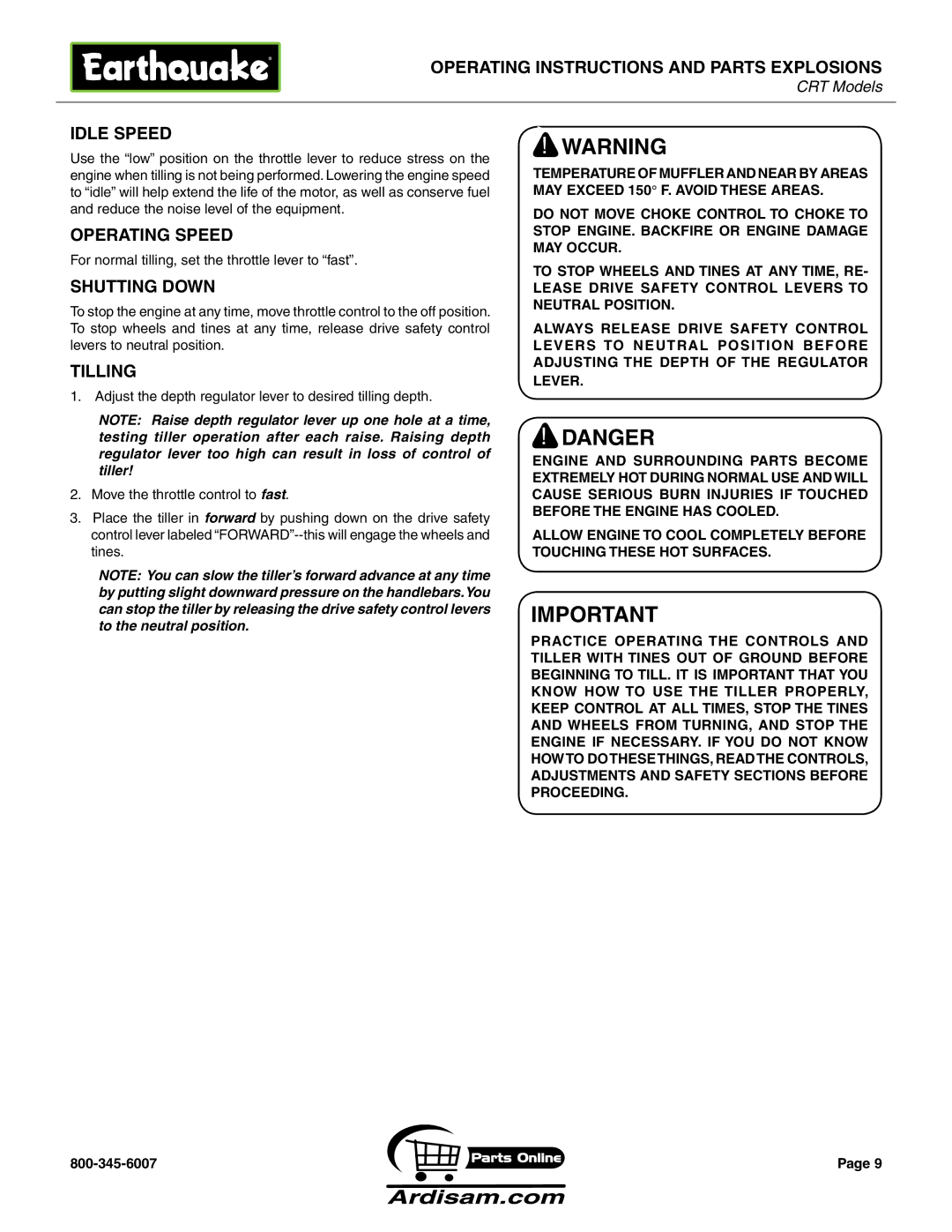R5055H 5.5 HP, 5055 6 HP, 5155 6 HP specifications
Briggs & Stratton has long been recognized as a leader in small engine manufacturing, known for durable and reliable power solutions. Among their impressive lineup, the Briggs & Stratton 5155 6 HP, 5055 6 HP, and R5055H 5.5 HP engines stand out due to their performance, efficiency, and innovative technologies. These engines are designed for a wide range of applications, from lawn mowers and generators to pressure washers and garden equipment.The Briggs & Stratton 5155 6 HP engine is characterized by its robust design, ensuring longevity and consistent performance under demanding conditions. With a displacement of 205cc, this engine is equipped with a solid cast iron cylinder sleeve that enhances durability and reduces wear. The overhead valve (OHV) configuration allows for better airflow, which results in improved efficiency and better fuel economy. It also features a dual clean air cleaner system, providing superior filtration and extending the life of the engine.
The 5055 6 HP model shares many similarities with the 5155 but is tailored for different applications, providing a reliable power source with remarkable torque. Its 206cc displacement along with an overhead valve design ensures effective combustion and efficient fuel usage. The 5055 is equipped with a recoil start, making it user-friendly for quick and easy startup, while also including a heavy-duty steel base for improved stability during operation.
Meanwhile, the R5055H 5.5 HP engine is specially designed for high-performance demands. With a slightly lower horsepower of 5.5, it still offers excellent power output thanks to its strategic engineering. The R5055H features a compact design that allows it to fit into tighter spaces, making it ideal for lightweight equipment without compromising on performance. Like the other models, it includes an OHV design for efficient fuel consumption and reduced emissions.
All three models incorporate advanced technologies that enhance serviceability and performance. The Easy Clean fuel system minimizes maintenance while ensuring effective operation in various conditions. Their user-friendly designs and operation features provide ease of use, making them suitable for both professional landscapers and residential users alike. Additionally, Briggs & Stratton engines are known for their strong customer support and warranty options, providing peace of mind with each purchase.
In summary, the Briggs & Stratton 5155 6 HP, 5055 6 HP, and R5055H 5.5 HP engines highlight the company's commitment to quality and innovation. With impressive specifications, advanced technologies, and an emphasis on durability, these engines are excellent choices for anyone seeking dependable power solutions for various outdoor applications.

